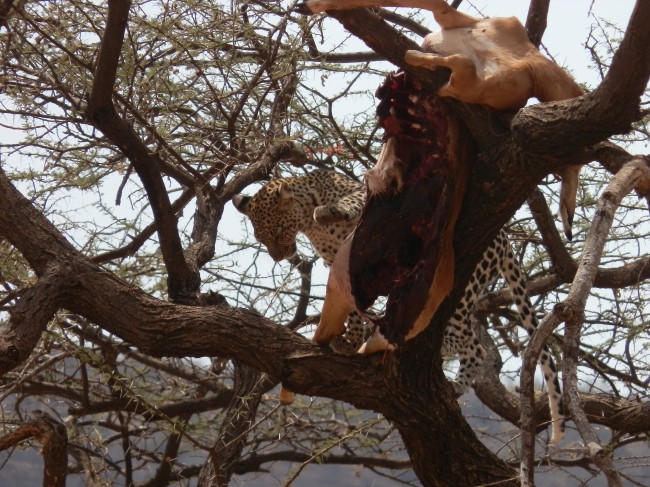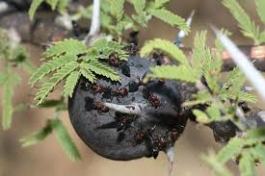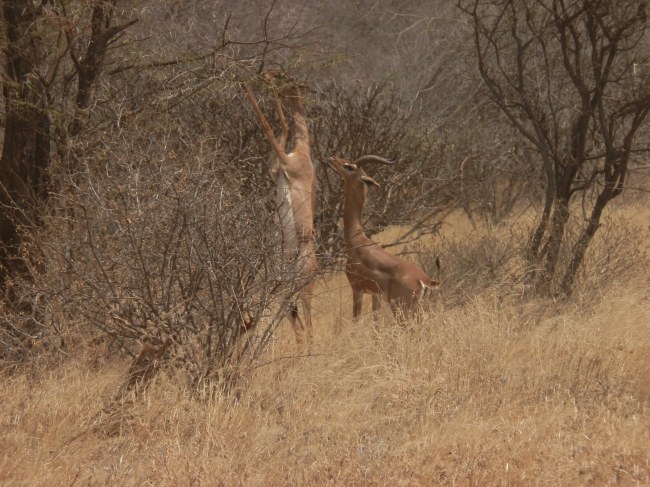They are the most dominant tree species in the savannah wilderness. They can withstand severe hot and dry conditions of the Savanna sometimes lasting from several months to many years. During such times their leafless, desiccated appearance may insinuate that they are lifeless, but it takes just takes a few drops of rain and they will brighten up the arid savannah with delightful blossoms. Many call them the acacia but I call them the engineers of life in the savannah.
The acacia comprise of pod bearing trees belonging to the subfamily Mimosoideae of the family Fabaceae. There are approximately 1300 species of acacia but majority of them are located in Australia. Known as the thorn tree, the acacia are adapted to the adverse climatic conditions of the savannah by having long deep roots that can reach the water table. Some have subcutaneous roots on the soil surface to take advantage of the little rainfall that may fall. When one is living in a water stressed environments such as the savannah one cannot afford to be wasteful, the acacia limit water loss by transpiration by having their leaves divide into tiny leaflets known as pinna. These can be held vertically to minimize transpiration and horizontally to capture sunlight.
Acacia leaves, twigs and bark are full of important macronutrients like potassium, calcium, Magnesium, phosphorus and Sodium. They also contain micronutrients like copper, zinc, iron and manganese. All these elements play a vital role in the metabolic reactions of the herbivores. Apart from extracting important minerals, animals can also quench their thirst from the high water content from the leaves. And after a long walk in the sun, the acacia also come in handy. Their spreading crown provide a much needed shade for many animals enabling them to cool off and avoid heat stress .Some like the charismatic elephants go to the extreme and even take a nap under their cool shade! The branches of the acacia also provide comfortable habitats for a variety of birds like the weaver birds. Even the elusive leopards use them to hide their prey from unwanted bullies like hyenas.
Animals aren’t the only beneficiaries of this vital tree species.Accacia just like beans are legumes and therefore possess the ability to fix nitrogen into the soil. Such a vital process is of course achieved with the assistance of nitrogen fixing bacteria like the Rhizobium species. This enhances the soil fertility and thereby facilitating the growth of many varieties of plants. This is just one of the many reasons why it is not strange to find where acacia are present many other different plants living near the acacia like the Commiphora species, shrubs like Grewea tenax and grass. These create diversity in the menu of these herbivores!
When you have juicy leaves, mouthwatering pods and crunchy twigs in the arid savannah surrounded by hungry herbivores chances are that you may be eaten to extinction.Accacia have evolved a variety of antipredatory adaptations to help prevent this fate.Accacians like Acacia nilotica has alkaloids which makes its leaves inedible to the animals. Some also have long thorns to discourage browsing. However one acacia species has evolved a peculiar relationship to prevent browsing by animals that outsmarts the others.
A peculiar relationship
The whistling thorn or otherwise known as Acacia drepanolobium produces bulbous thorns that are inhabited by ants from the genus crematogaster.This is a mutualistic association between this ants and the tree that has struck awe from the scientific community. The whistling thorn provides the ants with a place to stay and also delicious sap from it stems. The ants on the other hand protect the tree from hungry herbivores by stinging any intruder who attempts to destroy their home. Since this occupation is based on competitive exclusion some ant species are known to trim the tendrils of the acacia so that its branches may not touch trees bearing rival ants. Elephants too have been observed to avoid trees with such ants even if that tree has the best nutritional content.
Some few local examples
Acacia nilotica: this type can grow up to a height of 10m,has blackish grey or brown bark that is deeply grooved and has longitudinal fissures. Young twigs are covered in short hairs. Paired, slender spine grow from a single base and may curve backwards. A root decoction from this tree is used to cure haemorrhages,toothaches,diarrohea,dysentery,gonorea,tuberculosis.Extracts from the leaves can be used to cure eye infections,haemorrhges,sores,ulcers ,indigestion and menstruation problems. The bark also produces gum that can be used to make glue.Voortrekkeras used the pods to make black, red or yellow dyes and ink. The leaves contain 12%crude protein and 21.35% crude fiber (FAO).
Acacia refecien (red or false umbrella thorn): Can grow up to 5m tall. It has a reddish brown or greyish brown bark. The younger stems may have purple red appearance. It has both short curved and long straight thorns although not in the same pair. The bark can be used to curdle milk while extracts from the root can be used to cure stomach ache and as a diuretic for women who have given birth.it leaves are a mouthwatering delicacy for the greater kudu and other game.
Acacia tortilis also known as the umbrella thorn because of its distinctive spreading crown, is one of the most dominant acacia in Samburu.The bark varies from grey to black in colour.It has a combination of one long straight thorn with a small curved thorn alongside. Acacia tortilis also produces several pods that are fed on by baboons, kudu, impala and elephants. The Turkana also eat these pods and feed them to lactating animals to increase milk produce. In Somalia Tortilis is used to stabilize sand dunes and sheiterbelts.Bees also find its white or pale yellow flowers too irresistible and as a consequence it yields good quality honey. Two pharmacologically active compounds used in the treatment of asthma have also been derived from its bark.
Acacia elatior.This is an evergreen, riverine acacia that is normally found in close association with A.tortilis.The tree helps to stabilize soil on the banks of rivers thereby preventing soil erosion. The bark decoction is used to cure diarrhea, gonorrhea and coughs .The Turkana use its wood to make drinking vessels.
Acacia Xantholphloea: it has a smooth, powdery greenish yellow bark. It was nicknamed yellow fever by the early European settlers because of its tendency to grow in swampy areas which were breeding grounds of mosquitoes .These trees were therefore associated with malarial fever and hence the name. Contrary to its nickname it barks can be used to cure fevers and dry coughs. Elephants eat the young branches, leaves and shoots. Yellow fever adds nitrogen to the soil contributing to fertility.




Reblogged this on la plume de nature.
Pingback: Sonajhuri (Acacia auriculiformis) | Find Me A Cure